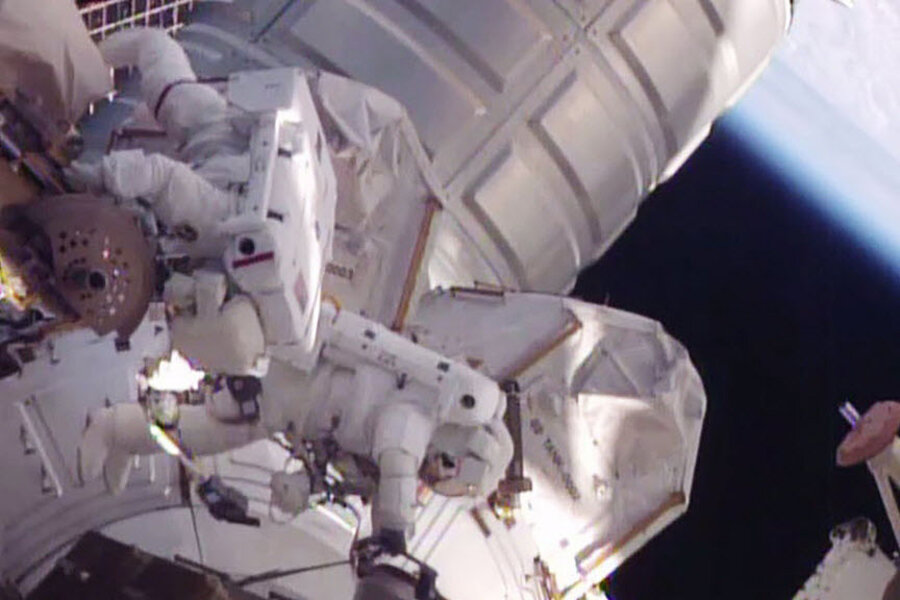ISS astronauts make the most out of 'emergency spacewalk'
Loading...
The “emergency spacewalk” performed by International Space Station Commander Scott Kelly and recently-arrived astronaut Timothy Kopra ended successfully on Monday. The pair moved a stuck rail car out of the way before a Russian cargo ship is due to arrive later in the week.
The car, which moves people and equipment around the exterior of the ISS, had become stuck when a crew equipment and translation aid, or CETA, cart, was left with its brake on.
The spacewalk to move the stalled car to a different location along the space station’s exterior had been expected to take 3.5 hours but ended up only taking 15 minutes, mission commentator Rob Navias, at NASA's Johnson Space Center in Houston, told Reuters.
Mr. Kopra and Mr. Kelly released the stuck brake preventing the CETA cart from moving, which then allowed the rail car to glide into a new position at its original work site.
Because the assigned task took so little time, they were then able to use their remaining time on the spacewalk to complete other crucial tasks. For Kelly, this meant routing power cables to prepare for a new docking mechanism that is expected to be installed next year. Kopra continued the preparatory work for a Russian research laboratory that will be built at the space station someday soon.
“This is a team effort,” Kelly said to mission control. “We're just the guys who are really just lucky enough to be going out here. It takes all of us to get this job done. So we much appreciate your help,”
Most spacewalks are planned months in advance, but this one was arranged on Friday.
This is the seventh spacewalk of the year at the station, Kelly’s third overall and Kopra’s second. Kelly is part of a “Year in Space” mission that is due to end next March; Kopra arrived on the space station six days ago with England’s first professional astronaut “Major Tim” Peake and Russian cosmonaut Yuri Malenchenko.








